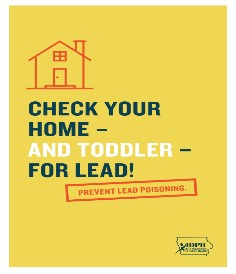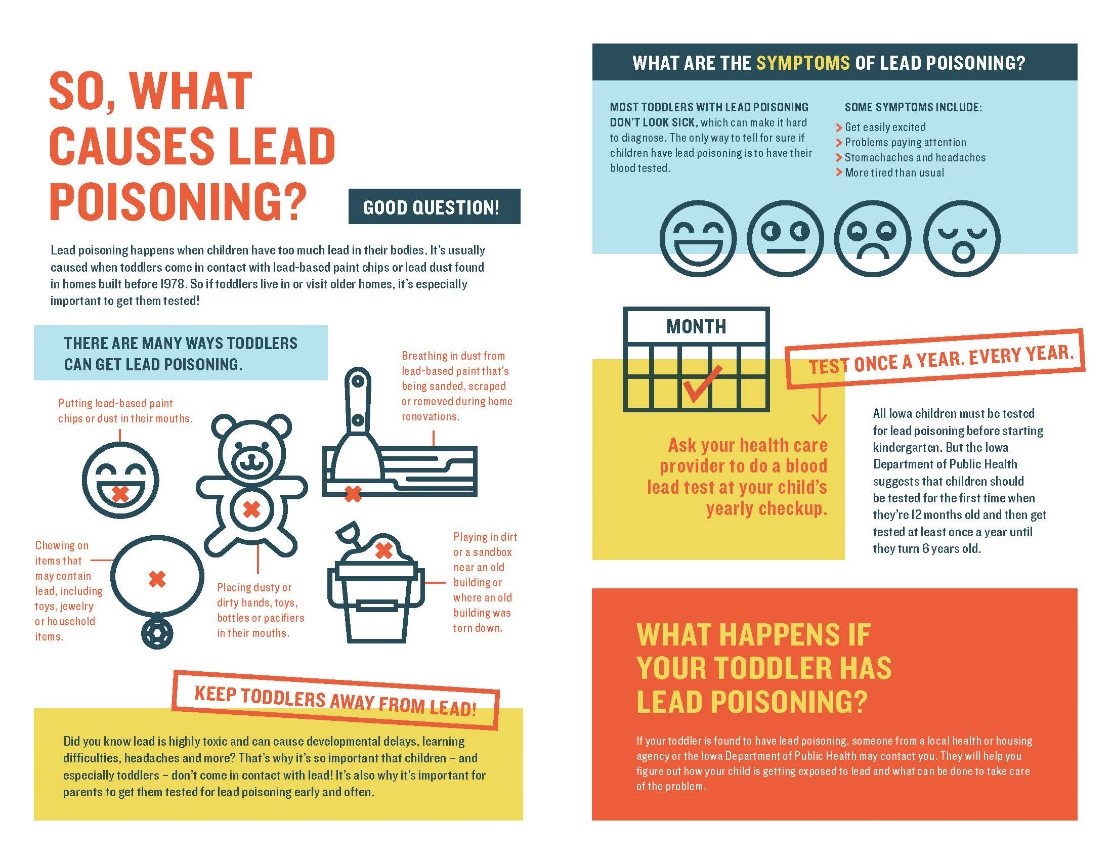What Is Lead Poisoning?
 Lead is a highly toxic substance that can produce adverse effects in nearly all organ systems in the body. There are many ways in which humans are exposed to lead; for example, through chipped paint, household dust, bare soil, drinking water, air, food, hair dyes and other cosmetics (NSC 2009). Lead-based paint, which was banned from residential use in 1978, is one of the main sources of lead poisoning in Iowa.
Lead is a highly toxic substance that can produce adverse effects in nearly all organ systems in the body. There are many ways in which humans are exposed to lead; for example, through chipped paint, household dust, bare soil, drinking water, air, food, hair dyes and other cosmetics (NSC 2009). Lead-based paint, which was banned from residential use in 1978, is one of the main sources of lead poisoning in Iowa.
Anyone can become lead poisoned if exposed to large amounts of lead. No safe blood lead level in children has been identified. Lead exposure can affect nearly every system in the body. Because lead exposure often occurs with no obvious symptoms, it frequently goes unrecognized (CDC 2019). Children under 6 years of age, and adults who work with lead or have a hobby that exposes them to lead are the most likely to have an elevated blood lead level or lead poisoning. Experts now use a reference level of 5 micrograms per deciliter (µg/dL) to identify children with blood lead levels that are higher than most children’s levels. Childhood lead poisoning has significant effects on the health of children and on community health. It is especially harmful to the developing brains and nervous systems of children under the age of 6 years.
Because lead exposure often occurs with no obvious symptoms, it frequently goes unrecognized (CDC 2019). Children under 6 years of age, and adults who work with lead or have a hobby that exposes them to lead are the most likely to have an elevated blood lead level or lead poisoning. Experts now use a reference level of 5 micrograms per deciliter (µg/dL) to identify children with blood lead levels that are higher than most children’s levels. Childhood lead poisoning has significant effects on the health of children and on community health. It is especially harmful to the developing brains and nervous systems of children under the age of 6 years.

For more information on lead poisoning contact us at 1-800-972-2026 or online at Contact Us.